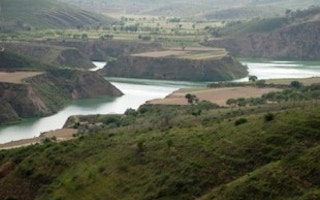When it comes to investment in protecting natural areas that provide drinking water and supplies, Asia dominates the market worldwide, according to a major new report that reveals all countries invested more than $8 billion dollars in 2011 to enhance water security globally.
The study, “ State of Watershed Payments 2012,” released on Thursday by US-based non-government organization Forests Trends confirms that in Asia alone, US$7.46 billion was invested in 83 watershed projects in 115.96 million hectares managed for watershed services in the region.
Known as investments in watershed services (IWS), these approaches address the natural landscape and the overlying social and economic fabric – which often directly controls the health of the natural environment.
Projects are as varied as the communities and countries in which they take place and go by different names: payments for watershed services, reciprocal agreements for water, water funds, eco-compensation, benefit-sharing arrangements, source water protection, green infrastructure investments, and so on.
China is responsible for most of the investment activity in the region, but other Asian countries are also home to long-running compensation mechanisms, innovative mechanisms, and strong national policy support, the study said.
“ Growing pressure on limited freshwater resources is one of the factors why there is an increasing trend in watershed investment in Asia and the rest of the world,” Michael Bennett, a senior researcher at Forest Trends, told Eco-Business.
Bennett explained that in the case of China, water is one of the most critical bottlenecks to the country’s near-term future economic growth.
As such, he added, the benefits to its people of more sustainable and rationally managing and investing in its water resources, include both direct improvements in human health through access to clean and sufficient drinking water supplies, and sustainable economic growth.
The study noted that a range of projects and scales can be found in Asia – from China’s massive government-driven “Eco-Compensation” efforts to sustainably finance watershed investment and management, to local NGO- backed initiatives in Indonesia, to private-sector financing in the Philippines.
In Southeast Asia, there is a long history of local-scale NGO-driven payment mechanisms. Many of these are part of the World Agroforestry Center (ICRAF)’s RUPES (“Rewards for, Use of and shared investment in Pro-poor Environmental Services”) program and WWF-Care’s Equitable Payments for Watershed Services initiative.
But the study noted that there might be a slight turning of the tide: RUPES and WWF in 2011 were both winding down their engagement, having laid groundwork for programs to continue functioning under community leadership.
At the same time, the study adds that the region may be witnessing the rise of national watershed investment programs and policies.
Vietnam’s national Forest Protection and Development Fund moved out of the pilot phase in 2011 after the rapid scale-up of the model in two provinces from 2008 to 2010.
Now, other countries in Southeast Asia including Cambodia, Thailand, and Laos are expressing interest in the model, which, unlike prior national payment programs, sources its funding directly from beneficiaries like hydropower operators.
The study also identified 76 new programmes under development worldwide, of which 36 are in Asia.
“ In terms of total absolute investments, I think that only other large countries such as, for example, the US, India, Russia, Brazil or Mexico, have the ability to approach or match China’s total investments in watershed services,” Bennett said. “If “massive” is measured in terms of investments per-capita or per-unit of GDP, however, I think that China still has significant room to increase its own investments, and that many other Asian countries will and are following suit.”
Bennett said that in the case of China, much of this large-scale investment “is to rectify the severe degradation of these ecosystems that has taken place over several decades of break-neck growth.”
“ At the same time, China as well as governments and key private sector actors worldwide are becoming aware of the importance of proactively investing in the conservation and sustainable management of natural watershed ecosystems, both to deal with current challenges but also to maintain resiliency and mitigate future risk,” he said.
Click here to see the Forest Trends’ report on “Statement of Watershed Payments 2012”

















